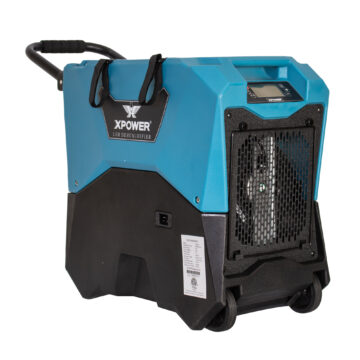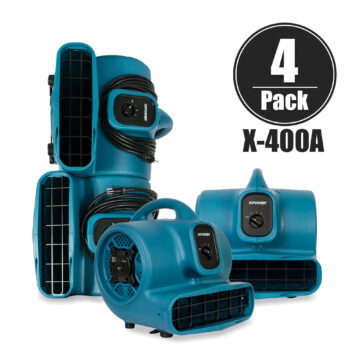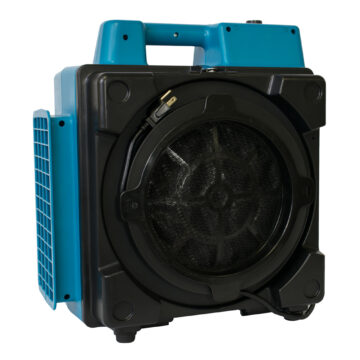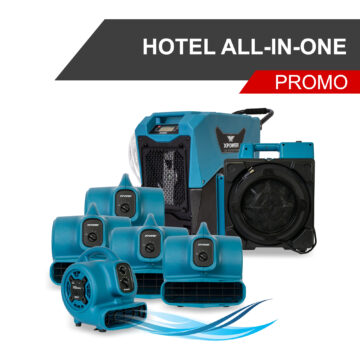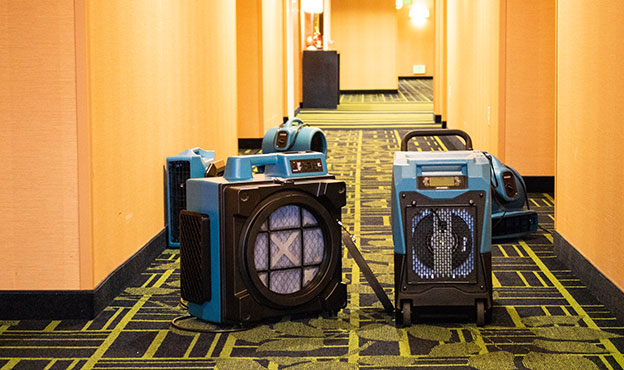
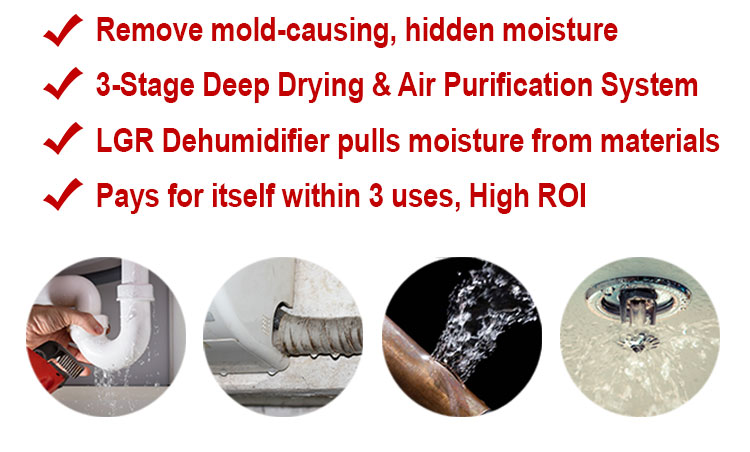

XTREMEDRY is a multi-step process that consists of the perfect equipment to use in the event of water damage emergencies. For mold to form, moisture needs to exist. By eliminating moisture, the breeding grounds for mold are also eliminated, preventing opportunity for growth. The XPOWER LGR Dehumidifier drops relative humidity levels below 25%. This dry environment expedites the evaporation process and dries out hard to reach saturated areas such as floors, walls, and ceilings. The drier the air, the quicker water will evaporate. This equipment is utilized in hotels, apartments, homes, hospitals, restaurants, schools, and medical facilities.



Follow the rule of 24-25! Remove moisture and prevent mold growth within 24 hours of water damage by dropping relative humidity down to 25%!
24HR Golden Window
Take action ASAP!! The drying process must begin within 24 hours of water damage to prevent mold from forming.
25 Relative Humidity Level
For an XTREMEDRY experience humidity levels must be reduced to 25% allowing moisture to dry quickly preventing water damage and mold.
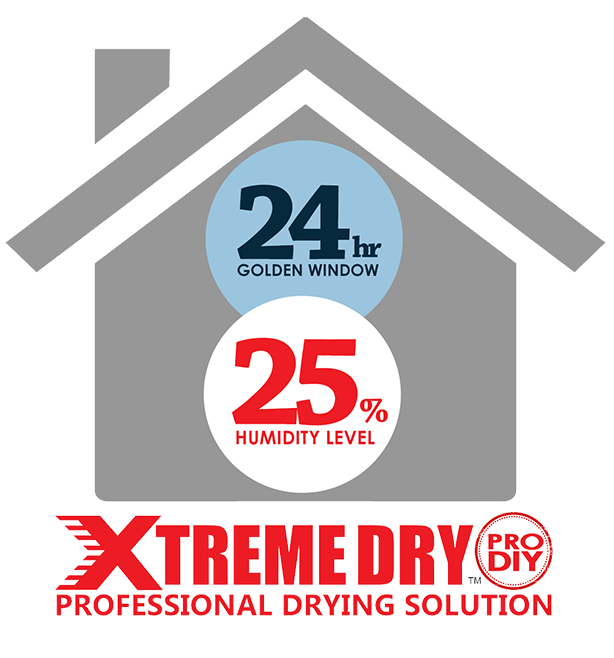
System Set Up
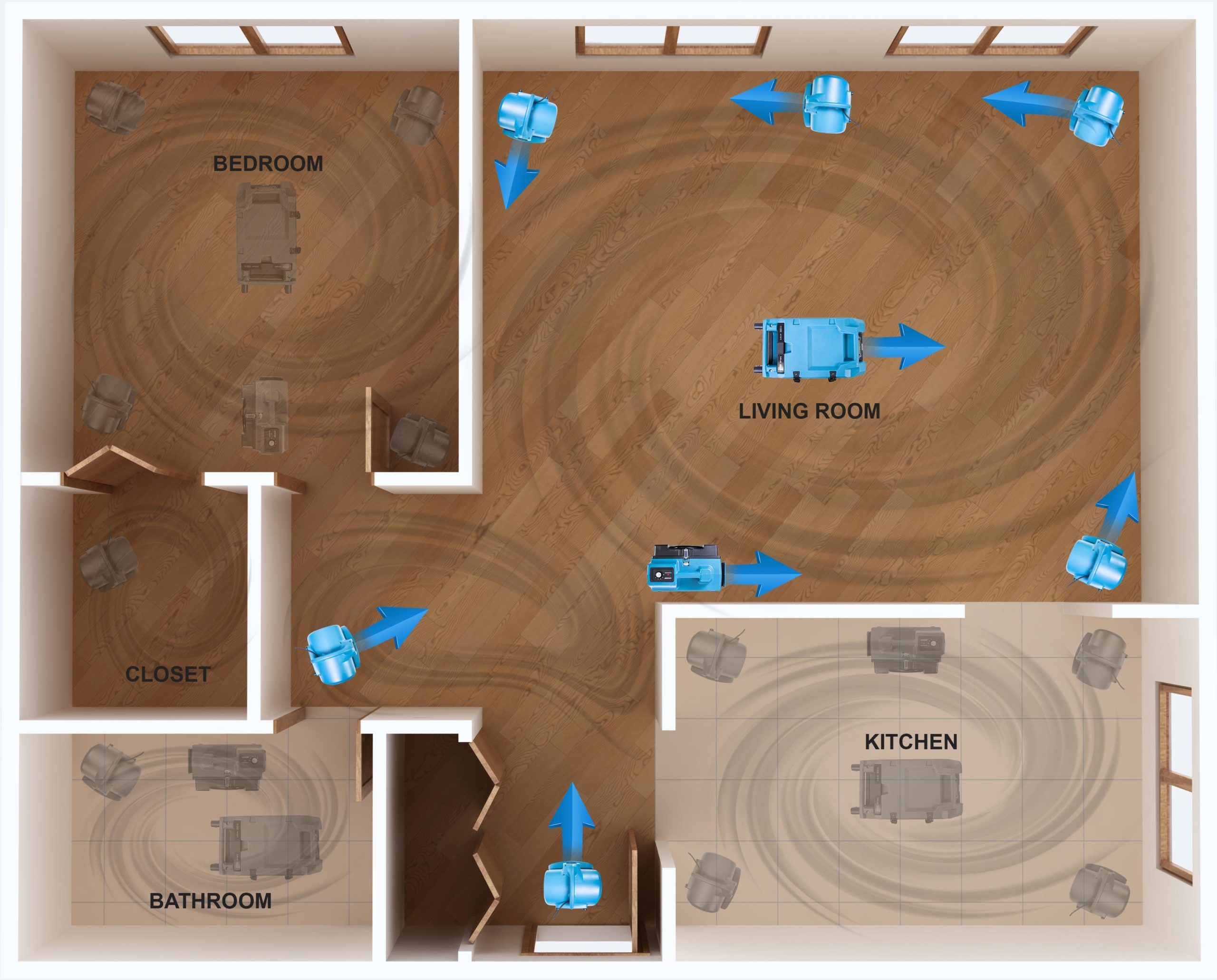
*Suggested Setup for Ultimate Drying Results

Start as soon possible
Mitigation procedures should begin as soon as safely possible. When rooms and items are exposed to water and water vapor for extended periods, moisture penetrates into them more deeply. The more water they absorb, the more time, effort and expense is required to dry them. Use this equipment daily and in water damage situations to prevent mold by reducing moisture in the rooms. Places like bathrooms, kitchens, basements, garages and HVAC systems accumulate a lot of moisture so these places are prone to mold.
1. Examining Water Source And Stop The Leak
Before restoration begins, the source of moisture intrusion should be located and eliminated.
2. Identify The Loss
Use the categories listed below to determine the type of water loss you have encountered. Determine if you can do it yourself or if you need to call a professional.
A. Do It Yourself (proceed to step 3)
Category 1 water originates from a sanitary water source. Examples can include: broken water supply lines; tub or sink overflows with no contaminants; melting ice or snow; and falling rainwater. (Note: Category 1 water can deteriorate to Category 2 or 3. Once microorganisms become wet from the water intrusion, depending upon the length of time that they remain wet and the temperature, they can begin to grow in numbers and can change the category of the water. Odors can indicate that Category 1 water has deteriorated.)
B. Call A Professional If The Water Is Unclean
Category 2 water contains significant contamination and has the potential to cause discomfort or sickness if contacted or consumed by humans.
Category 3 water is grossly contaminated and can contain pathogenic, toxigenic or other harmful agents and can cause significant adverse reactions to humans if contacted or consumed.
3. Remove Excess Water
Remove excess water, absorb, drain, pump, or vacuum-extract. Effective extraction is a critical component of efficient structural drying since water that is not physically removed from the structure will need to be removed by evaporation, a much slower, costlier, and more energy-intensive process.
4. Remove Unnecessary Items To Accelerate Drying Time
Materials that are not restorable or that pose a safety hazard should be removed as soon as possible. This way unnecessary moisture is removed accelerating drying times. Items can be, but are not limited to: bedding, furniture, throw rugs, etc.
5. Manage Indoor Air Quality -Setup Air Scrubbers
Airborne contaminants can be spread by natural circulation, or by using air moving equipment. The air purification process is when 99.97% of large and mirco particulates, as small as 3 microns are, are removed utilizing commercial grade air scrubbers equipped with HEPA Media Filters. Capturing these contaminants which includes mold spores and other allergens, is essential to preserve your and your guest’s respiratory health.
1) Place the air scrubber near the vent or wall where the odor is most concentrated.
6. Controlling Airflow -Setup Air Movers
Air movers should be used to provide continuous airflow across all affected wet surfaces. Typically 4 air movers per dehumidifier.
1. Close all exterior windows and doors
2. Point air movers in the same direction
3. Position Air Mover snout 6 to 12 inches from the wall but not touching it
4. Deliver air at a 15° to 45° angle facing the wall
5. If possible, ensure that air movers are creating a cyclone effect and not pushing air against each other.
6. Account for obstructions (eg. Furniture and equipment),if their presence prevents airflow across the affected area, adjust and continue.
7. Read manual for safety procedures and follow all warnings and safety precautions prior to use.
8. Axial fans with 360° rotation can be placed in the center of the room aimed at ceilings and centrifugal fans with 3 positions 0° ,45° and 90° can be placed against the wall blowing upwards.
7. Control Humidity And Dry The Room -Setup Dehumidifiers
1. XPOWER XD-85LH LGR dehumidifier separates the moisture from the air in the affected area and returns dry air at a rate of 85 pints per day (at AHAM) with sufficient airflow.AHAM is the abbreviation for Association of Home Appliance Manufacturers, which is the company that established the testing conditions. AHAM rating refers to “average conditions” which means the temperature is 80° Fahrenheit and the humidity level is 60%.
2. LGR dehumidifiers are typically placed in the center of the room with the return air in the same direction as the air movers.
3. Attach clear drain hose provided to the unit with opposite end in a drain like bathtub or sink.
4. Attach power cord to unit and plug into grounded outlet
5. LGR X-85LH dehumidifier offers features such as temperature, relative humidity and run times to aid in the documentation of the drying process (see owner’s manual)
6. Read manual for safety procedures and follow all warnings and safety precautions prior to use.
7. A proper mixture of air movement and dehumidification is necessary to prevent secondary damage.
8. Continually Monitor To Ensure The Environment Is Getting Dryer Every Day
Ongoing inspection and monitoring ensures that all walls, corners and cavities are drying properly.



